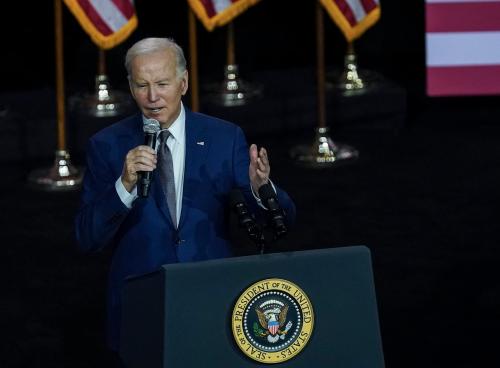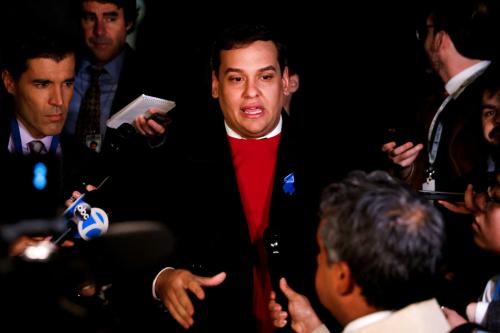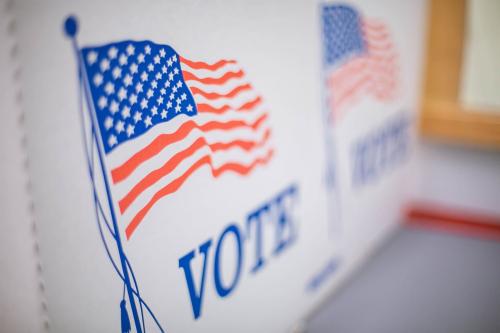This piece is part of “Polling young voters,” a series exploring some of the reasons young voters lack enthusiasm for voting in 2024 through polling analysis.
The results from the 2018, 2020, and 2022 elections make clear that Democrats win when they earn large enough margins from younger voters (those under 45) to offset the consistent Republican advantage among older voters. For example, in 2022, voters under 30 gave Democrats nationally a 63%-35% margin, while voters between 30 and 45 years of age favored Democrats 51% to 47%. Overall, voters under 45, preferred Democratic rather than Republican House candidates, 55% to 42%. And, as David Plouffe, President Obama’s campaign strategist, recently said, “There is no path to victory for President Biden without a strong turnout from voters under 30.” 1
However, recent polls show widely varying support for President Biden from Plurals (Gen-Z) and Millennial voters, but not even the most optimistic show him with margins over Donald Trump that would lead to a comfortable re-election victory. Thus, to be successful, the Biden campaign needs to fully engage voters under 45, and not only motivate them to vote but to vote for the Democratic ticket by margins comparable to the last three elections. To make that happen, the campaign will have to engage in a conversation with voters using media, messages, and messengers attuned to the world of younger voters.
Unlike older voters, whose political opinions have become “calcified,” partially because of that age group’s preference for getting their news from one or the other information ecosystems that surround Fox or MSNBC cable news, younger voters get most of their political information from sources they trust on social media, mostly Tik Tok, YouTube, and Instagram. All three attract more users among people under 45 than traditional media sources and should be the vehicles used to persuade and engage younger voters. In addition, messaging for young voters should focus on issues, not party. As pollster Celinda Lake recently advised Democratic candidates seeking to win over younger voters, “Your focus should be on issues first, issues second, candidates third, and party identity never.”
A November Economist/YouGov survey, asked a national sample of 1,500 registered voters about such discrete economic factors as “jobs and the economy,” “inflation and prices,” “health care,” and “education.” About two-thirds of young voters rated each of these specific issues as “very important” by almost identical percentages and gave President Biden high marks on several of them. For example, about half (50%) approve of Biden’s performance in dealing with “education,” while disapproving by a similar percentage (51%) of his handling of “inflation and prices.” And a plurality (45%) approves of his performance when it comes to “jobs and the economy,” suggesting the economy may not be the overwhelming issue among younger voters that it may be for older ones.
Instead, there is a trio of issues that are equally, if not more, motivating for younger voters that reflect their concern with the type of country they wish to live in. Just before the midterms, more than one in six younger voters ranked these three issues as very important when thinking about who to vote for—the future of American democracy (63%), the right to an abortion (73%), and climate change (64%).2 With Congress hopelessly divided on all the above between now and January 2025, President Biden has a unique opportunity to dwell on his track record of success on all the issues important to younger voters and draw sharp differences with his opponent on each of them, whoever the Republicans nominate.
Finally, if Democrats hope to persuade and turn out younger voters, they must use messengers that voters under 45 can relate to. An 81-year-old career politician is not the ideal messenger to sell his successes to younger voters. Fortunately for them, the Democratic party has access to more effective spokespersons, especially the vice president, who can be used to help overcome whatever disadvantage Biden’s age might present. Credible messengers who can communicate why a vote for Biden serves younger voters’ vision of the America they desire must be given a much higher profile in the campaign than they currently have. A cadre of influencers and surrogates from the world of social media and entertainment who connect with younger voters should be recruited and strategically deployed by the Biden campaign if they want their message to reach younger Americans.
The key to retaining the White House next year rests on the Democrats’ ability to mobilize and persuade voters under 45. With less than a year before the election, Democrats have an opportunity to win the large majorities from younger voters as they have done in the past and as they will need to do in the future. But that involves running a campaign that integrates the media, messages, and messengers that are most likely to engage younger voters. No matter what public polls or the campaign’s own surveys show right now, there’s not a moment to waste before they launch such an effort.
-
Footnotes
- Interview with Stephanie Ruhle, “The Eleventh Hour,” MSNBC, November 28,2023.
- Pew Research Center, October 20, 2022, survey tabulations prepared for authors.
The Brookings Institution is committed to quality, independence, and impact.
We are supported by a diverse array of funders. In line with our values and policies, each Brookings publication represents the sole views of its author(s).










Commentary
There is nothing wrong with young voters that the Biden campaign can’t fix
December 7, 2023